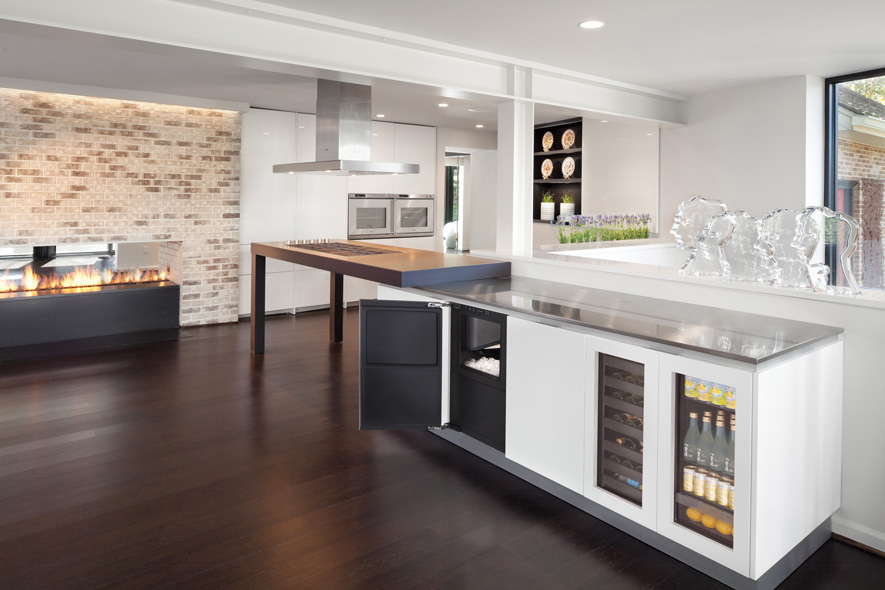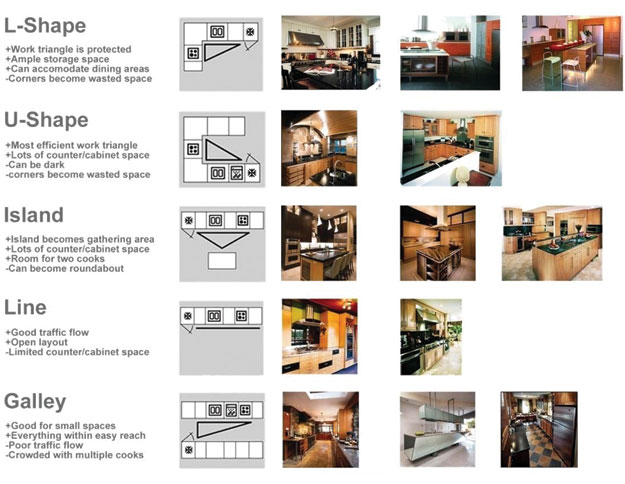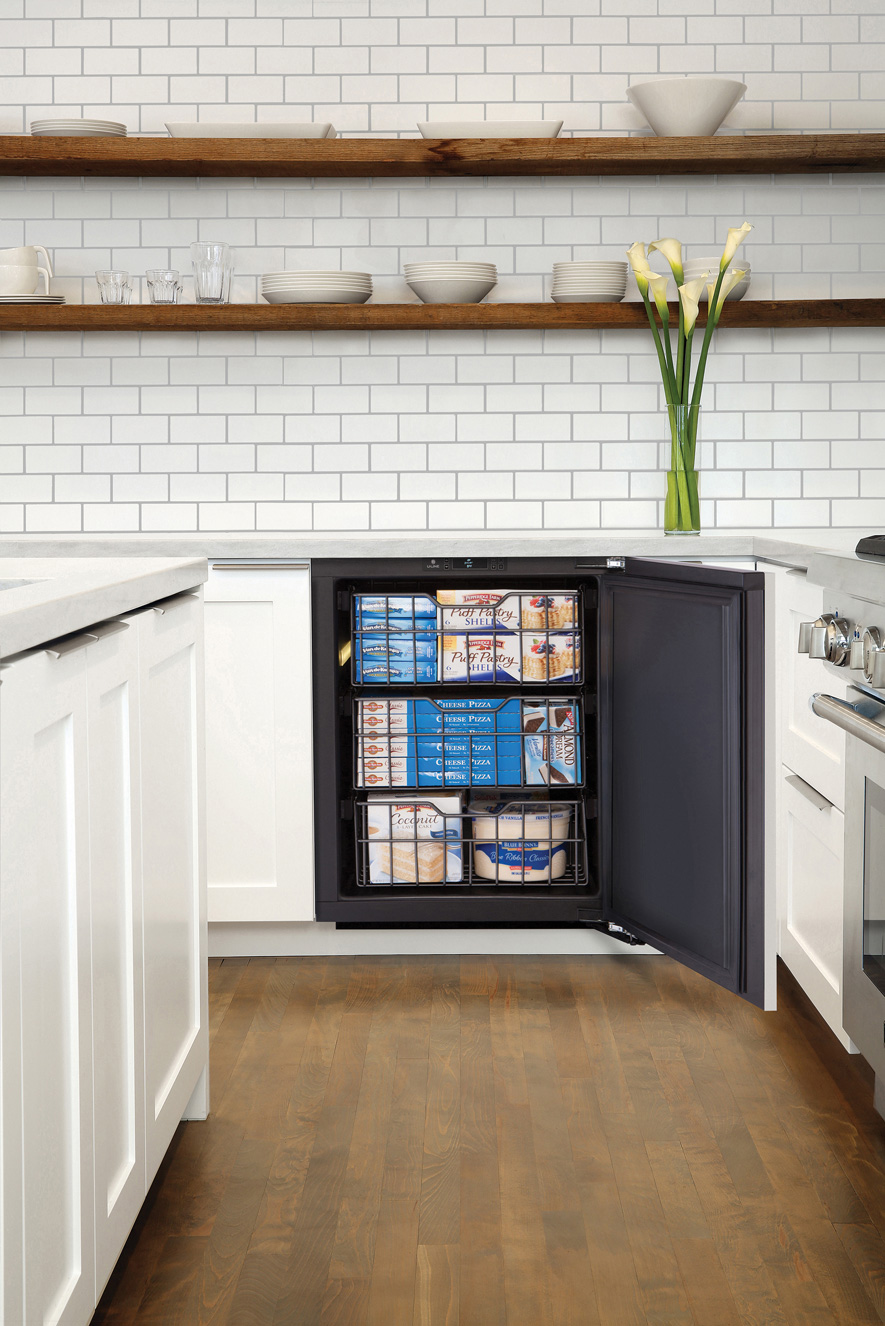The Shift to Modular Refrigeration
Learning Objectives:
- Discuss contemporary trends in kitchen design as they reflect the health and welfare of home occupants.
- Define the influence of the current social movement of aging in place and how it impacts kitchen design and layout and the senior population.
- Describe the impact of evolving technology and energy efficiency on kitchen appliances.
- Explain the social and economic advantages of modular refrigeration and how it contributes to green building goals and the well-being of families.
Credits:
Kitchen envy. It strikes at the sight of a sleek, well-designed, efficient kitchen With their striking cabinetry, textured countertops, and premium appliances, today’s kitchens can be showpieces if not outright status symbols. Realtors tell us that the kitchen is often a key selling point in the purchase of a home and that remodeling a kitchen gives homeowners the greatest return on their investment. Admittedly, the kitchen has come a long way. Traditional kitchens were small and self-contained, primarily utilitarian spaces devoted to meal preparation and cleanup, and sealed off from the rest of the home. Social activity around food was the exclusive province of the dining room.
Kitchens have evolved. In the past two decades, the trend toward larger, multipurpose kitchens has taken root. The kitchen is the new living room, the communal center of the home, as walls are removed to create the feeling of more space and add a holistic quality to a house’s layout. Today’s trends are toward a more transitional design aesthetic and a more open kitchen design. Accompanying those trends are a rethinking and redeployment of the traditional role of refrigeration in the home kitchen.
This article will discuss the latest economic, social, and demographic developments that are impacting kitchen design and the role of modular refrigeration. Also covered will be the ways in which modular refrigeration contributes to the creation of functional spaces that reflect the changing domestic landscape.

Image courtesy of U-Line
Modular refrigeration allows for a completely customizable kitchen space. This efficient kitchen choreography helps ensure a flow that accommodates today’s trend toward zone kitchen design.
MODULAR REFRIGERATION: WHAT IS IT?
The traditional big box refrigerator is experiencing dramatic changes. Many designers and consumers are opting to “disassemble” it, and locate the pieces strategically throughout the kitchen and elsewhere. Instead of a typical 84-inch unit, smaller refrigerator columns or fully hidden refrigerator drawers are being separated from the traditional freezer, opening up more counter space. In use since the 1990s, modular refrigeration gives users the flexibility to preserve the right product, in the right place, at the right temperature. This may involve a refrigerator drawer in the kitchen island, or an 18-inch solid-door refrigerator set to market mode to store fruits and vegetables near a prep sink, or a beverage center and clear ice machine in the wet bar, allowing for maximum customization for a particular lifestyle. Models with front ventilation systems offer the greatest flexibility, as they can be installed undercounter, in island applications, outdoors, wet bars, offices, etc., without the need for additional airflow. According to informal testing by manufacturers, switching from a traditional big box refrigerator to several smaller modular units does not result in a loss of refrigerator, freezer, or ice capacity.
THE KITCHEN TRIANGLE: THE TRADITIONAL APPROACH
To gain a better understanding of the impact of modular refrigeration, it is important to first understand the traditional kitchen triangle and its role in kitchen design. The kitchen work triangle is an ergonomic design principle and a traditional approach to configuring a kitchen space. It is defined by the imaginary lines that connect the three main kitchen work sites— the refrigerator, the sink, and the stove—and is intended to optimize the distance between them while reducing traffic in the work zone. In the classic kitchen triangle, each leg of the triangle should be between 4 and 9 feet. The total length of all three legs should be between 12 and 26 feet. Countertops should not intersect any leg of the triangle more than 12 inches. Major traffic flow should not move through the triangle.

Photo courtesy of U-Line
There are several variations of kitchen layouts based upon the kitchen triangle.
Kitchen layouts based upon the kitchen triangle are intended to keep the distance between the points workable—neither too close nor too far apart—so that kitchens will be easy to use. As can be seen in the accompanying illustration (see the online version of this course), there are several variations of the theme. In the L-shape configuration, the work area is protected. There is ample storage space, and dining areas can be accommodated. Corners, however, become wasted space. The U-shape is the most efficient work triangle. There is significant counter space. However, corners and walls, here again, make for wasted space, and this configuration can make for a dark kitchen, rather than an open-concept light kitchen. Many newer kitchens incorporate an island. In addition to offering additional counter and cabinet space, the island configuration also becomes a gathering space, promoting convivial communication and sociability. Two cooks can work easily at an island, which is ideal for preparation of family meals and including children in the process. A simple line configuration offers the advantages of an open layout and a good traffic f low; however, cabinet and counter space is limited. Finally, the galley kitchen, so typical in smaller homes and apartments, can provide inefficient kitchen choreography and can be problematic. While all appliances and cabinets are within easy reach, traffic f low is poor, and the space is too cramped to accommodate multiple cooks or to serve as a comfortable gathering spot.

Photo courtesy of U-Line
Seamlessly integrated refrigerators are now separated from the traditional fridge/freezer, opening up more counter space and extending the preservation of food and beverages.
MODULAR REFRIGERATION PRODUCTS: OPENING UP TRADITIONAL KITCHEN DESIGN
Single-unit refrigeration as we know it has pros and cons in modern kitchens. It clearly identifies the space as a kitchen, and works well if the kitchen is small and it is placed within the minimal number of steps between the sink and the oven/stove. If only one person is working in the kitchen and there is little or no traffic through the triangle work area, the traditional fridge is fine. However, the traditional fridge doesn’t allow users the flexibility to put items where they are most useful, nor is it efficient when there are multiple cooks or users in the kitchen at once. Not always practical in larger kitchen spaces, the traditional big box refrigerator forces us out of our natural instinct to work and organize in zones, and it takes up potential counter space.









